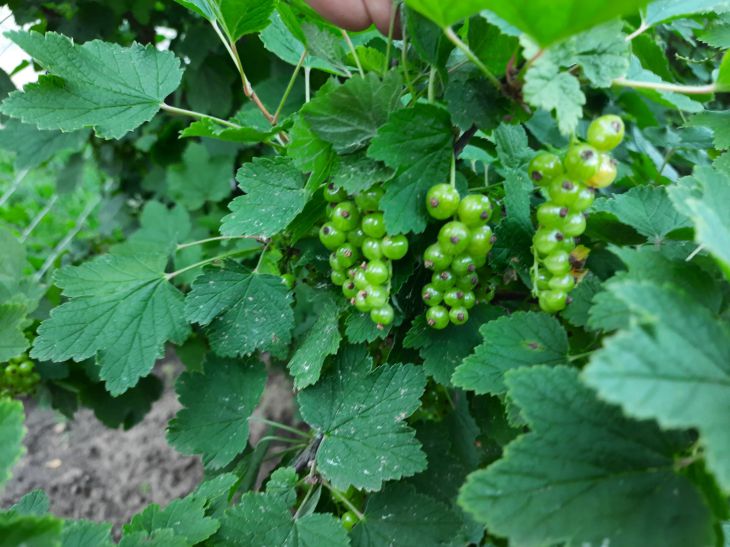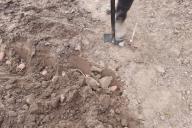How to plant currants - we decide on the transplant season, choose a convenient propagation method for ourselves and harvest.
Let's decide: in autumn or spring
It is unlikely that you will find a summer cottage where currant bushes do not grow. The growing process is simple, so even beginners can handle it. Currants can be called a favorite of gardeners, says the expert of the portal "MOS SMI", agronomist and landscape designer Anastasia Kovrizhnykh .
Currant bushes are distinguished by their flexibility and good survival rate. Reproduction can be carried out at any time of the year. The main thing is to decide on the method and the appropriate season: autumn or spring.
In spring, currants are propagated using cuttings and dividing the bush. In spring, they begin to grow beautifully.
There is only one downside here - the first flowering and berries will appear on the bush only next year, unlike autumn planting. Hence the conclusion: it is better to plant and properly propagate currant bushes in the fall.

Selecting a method for propagating currants
Currants can be grown in many ways. Each of them has its own advantages and disadvantages.
Following our recommendations, you can easily choose a convenient option for planting currants.
By lignified cuttings
The most suitable for cuttings are woody currant branches aged 2-4 years. Cutting cuttings about 12-15 cm long is preferable in the fall. Each unit should have up to 5-6 buds. The branch is cut at an oblique angle from below, and a straight cut from above.
Suitable period: September 10 – October 10. It is not worth planting later, as the survival rate of plants is significantly reduced in cold weather.
If winter starts late, then the beginning of December will be enough time for the cutting to take root. In the spring, you need to transplant the autumn bush to a permanent place with caution.
Slicing
It is better to prepare cuttings at the end of September. At this time, the sap flow in the branches slows down, and the bush itself loses moisture. The shoots are cut with a sharp pruner, and then the branches of the desired length are cut. Usually the length of the cuttings is up to 20-30 cm.
For propagation of currant bushes, it is advisable to harvest one-year shoots. They become stronger and healthier by autumn. The thickness of each cutting is not less than 0.7-0.8 cm.
Storage
To preserve the planting material, the snow method is used. The prepared cuttings are placed in a wooden box in a vertical position, and the container is filled with snow from above.
To prevent the material from rotting over the winter and losing moisture, the cut areas must be treated. For this procedure, you can use beeswax, hot paraffin, or garden pitch.
Some gardeners suggest storing cuttings in a cellar, after wrapping them in a damp material. By spring, novice gardeners can study the material on how to plant blackcurrants from sprouted cuttings.
Planting in spring
In early spring, the cuttings are taken out of storage, inspected for damage, treated with antiseptics, and then planting work begins. The shoots are rooted using this method:
Planting currant bushes
Prepare the soil substrate in advance in the container, which will be needed for rooting.
Keep the cuttings in a growth stimulator.
Keep it in water for some time until young roots appear.
The water in the jar needs to be changed daily. The first roots will sprout in 7-10 days.
Green cuttings
The most common question asked by beginners is how to propagate currants using cuttings in the fall or early spring. This is easiest to do using green shoots that bend well and do not break when bent. Such propagation of currant bushes is usually done in the spring or early June. The survival rate of green cuttings is 70-90%.
Slicing
The cuttings are cut early in the morning, while the dew is still there. For cutting green shoots, developed bushes with a good yield are selected. Straight annual shoots without diseases and pests are suitable for cutting. For some time, the shoots are kept in the shade, wrapped in a damp cloth.

Planting in autumn
Now we will clarify how to plant currants with cuttings in the fall so that the plant takes root. Planting is done at an angle. The cutting is deepened to the first leaves. The hole is lightly tamped from above, mulch is used so that moisture does not evaporate and weeds do not grow. Young roots appear in 7-14 days.
Layers
To obtain strong currant seedlings, another method of cuttings is used - sprinkling horizontal layers.
Early in the spring, strong branches that grow closer to the ground are selected from the periphery of the currant bush. They are pinned with thick wire and sprinkled with loose soil on top. Care is normal. In the fall, the grown bush is dug up and placed in a permanent place.
Planting currant seedlings
Soil preparation
In autumn, a plot of land is allocated in the garden for planting cuttings. Prepare the substrate in advance. To do this, take 30 g of superphosphate mixture, 15 g of potassium sulfate, and 10 kg of rotted humus per 1 m2. Remove weeds, spread the mixture and dig it up.
Rooting of the shoot
The cuttings are cut in mid-late autumn, then kept in water or in a damp material until spring in a cool place: a cellar or basement, or dug into the ground, and sprinkled with leaves up to 15-20 cm on top. In the spring, the cuttings are germinated and planted. Then comes the usual care for seedlings of the plant in the open ground: watering, fertilizing, mulch or compost.
Separation of seedlings
With the onset of autumn, the rooted cuttings are separated from the central branch with a sharp pruner if the cuttings were made with lateral shoots. Several bushes with their own root system can form on one layer. The largest seedlings are those that developed closer to the mother currant bush. They are immediately placed in a permanent place.

When will it start bearing fruit?
The fruiting period of currant bushes depends on many factors: variety, planting site, type (black, red or white) and proper care. Each type enters its own productive period differently.
Blackcurrant
This type of currant bush has mixed buds that produce new shoots. The flower cluster is formed at the base, evenly distributed along the entire length of the branch. The largest harvest of blackcurrant bushes will be given by the branches of the previous year.
This year's growths, formed on two-year-old shoots, are of particular value. Large berries are located higher.
Red currant
Currants with red berries increase their yield closer to 3-4 years of bush development. In one place, a bush can bear fruit for up to 15-20 years.
From time to time, old branches need to be removed with pruning shears.
When planting a seedling in the fall, the first berries will appear next year. The yield of any type of currant can be increased by using agricultural practices and pruning.
Previously we wrote about how to properly grow gladioli .









